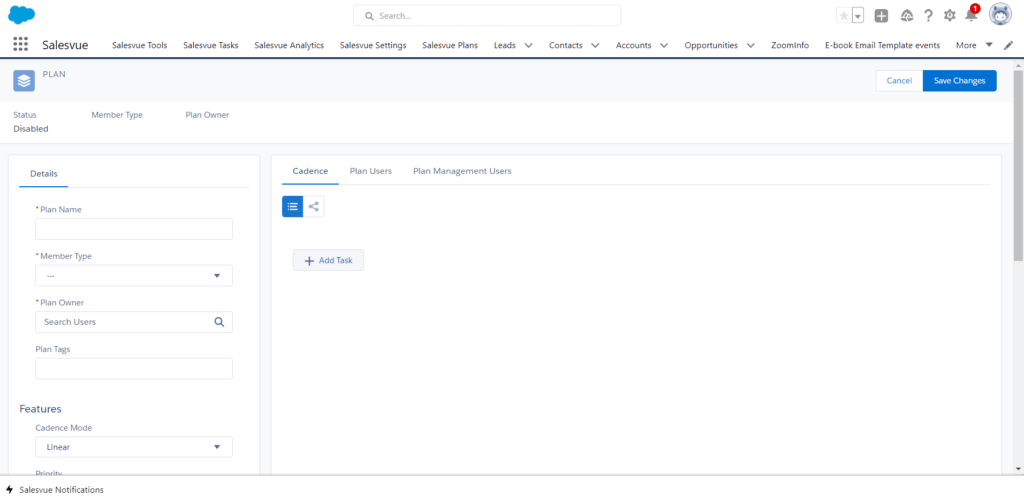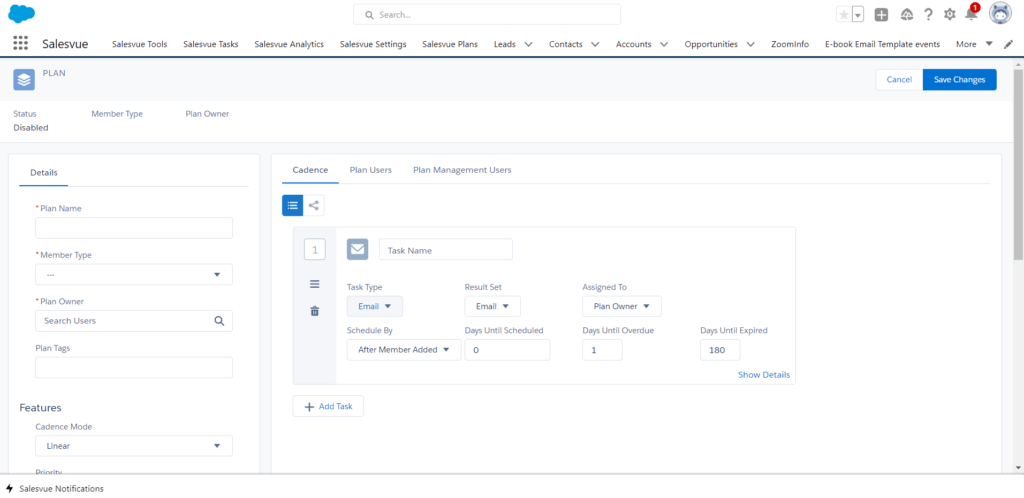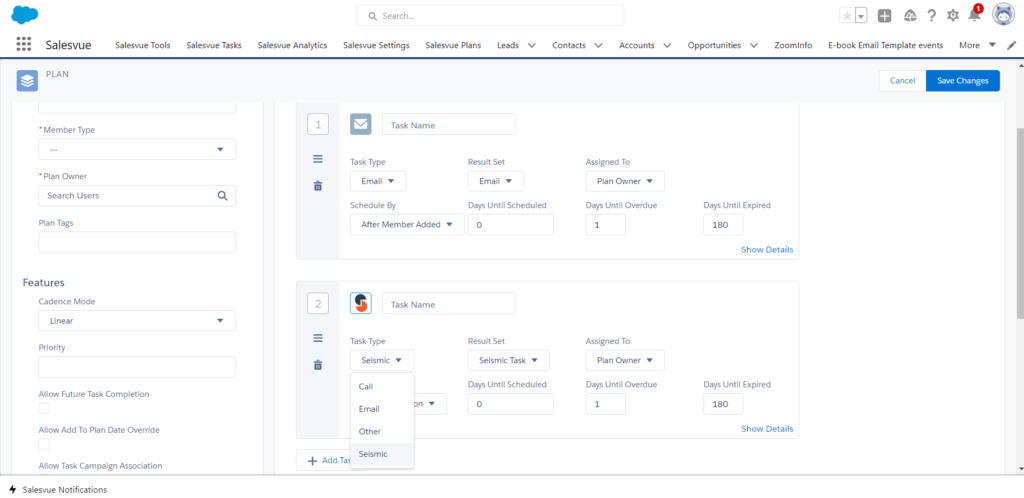If you asked the average person how they feel about marketing emails, they would probably say they often feel bombarded or annoyed with them. However, if you asked those same people if they have ever taken advantage of a deal or learned something new through one of these emails, they would probably agree with this as well. So, where is the middle ground? What are the best practices for these emails?
These are the questions sellers and companies have to answer before sending mass emails out to their customers and prospects. Without knowing how an email cadence can be utilized, or where they can go wrong, sellers are setting themselves up for poor results. Every sales leader can benefit from an email cadence when done right.
Email Cadence Overview
What They Are
Email cadences are sales cadences that only use emails as touchpoints. Rather than including phone calls or social media connections as well, these cadences focus on emails. Often used for marketing, these types of cadences are a great way to push information and material out to large amounts of people with ease. With the single click of a button, an email cadence can reach the same amount of people it may take weeks to reach by phone.
How They Are Used
Email cadences are a great tool for email marketing. By blasting many emails out at once, they are used to promote marketing material. They can be used to promote a new product, send out a newsletter, or even send ebooks. Whatever material marketing wants to push out can be sent using these cadences. The beauty of them is this material can go to thousands of people instantly. This allows the sales team to focus on more important activity, rather than get bogged down in repetitive low-level tasks.
How They Help
When used properly, email cadences can help make your sellers more efficient. As just mentioned, by eliminating the need to perform low-level tasks manually, your sellers will have more time for doing what they are getting paid to do, sell. Another great aspect of email cadences are data tracking and the analytics produced from email marketing. By using certain software, managers and team leaders are able to see various data points that are useful moving forward. This included which material is opened, what people read the most on documents, or how many links are clicked per email template. Not only does this help sellers figure out what is working so they can tweak cadences as needed, but this also helps marketing tweak material so it resonates better with prospects and customers.
How do you Create an Email Cadence
Now comes the fun part, creating the cadence itself. This is made easy within Salesvue.
Start by opening the Salesvue Plans tab from the dashboard. This is where you will find all created “plans”, which is Salesvue’s name for cadences, and be able to create new ones. From here, click on the New Plan button to get started.

The page and process will be identical to if you were creating a cadence with different types of tasks, like phone calls and social media connections. However, this time you will only add email tasks to the plan.
You will notice the same column down the left hand side as any other cadence. This is where you will enter information like Plan Name, Member Type, and Plan Tags among other information.
Once that is complete it is time to start adding email tasks to the plan.
Click on the + Add Task button to get started. This will display a new customizable task. Click on the dropdown under Task Type and select Email. This will change the task to an email task.

From there, start filling out the rest of the information on that page, such as the Result Set, Assigned To, and Schedule By dropdowns.
You will also notice a fill-in under Days Until Scheduled. This becomes more important in following tasks, but is not important for this first one.
Next, select Show Details at the bottom right to make more changes to the task. This is where you will add an email template. This template can be full of marketing material with a touch of personalization using Salesvue’s email template features.
If these emails are going to be sent to a large number of people, it will be a good idea to also use Bulk Email Options. This is where you can select Use Bulk Email Provider and decide what name and sending address override you want to use.
Once this task is set up, it’s time to move onto the second one.
This time, you may want to switch things up, so here are ways you can do that.
Say for this email you are sending out an ebook and want to see how long people read it for and which pages get their attention.
[*Disclaimer* you’ll need a Seismic account and to integrate it with Salesvue before you can create the following task, but we certainly recommend it. Otherwise, you can send other content through standard emails.]
To accomplish this, you are going to set up a Seismic task. By selecting Seismic from the Task Type dropdown, you will be able to set the rest of the task up like any other email task. However, this will give you the ability to add a Seismic document and gain more analytics into what your recipients are doing with the material

Once Seismic is selected as the Task Type, fill out the task just like before.
One note going forward is since you are no longer on the first task of the plan, you have to make sure to enter another number for Days Until Scheduled.
This is the number of days in between tasks, or how many days between each email being sent. This is where you will have to do some research into how many days are preferred between emails. There will be more on this later on.
Now, once this task is completed it is time to build out the rest with what your sales and marketing teams want.
What are the Email Cadence Best Practices
Find the Right Frequency
A major part of email cadences and email marketing is figuring out the right frequency. People hate being overwhelmed by emails, but they also need consistency to not forget your company name or product. It is a very thin line between these two issues. Sending an email everyday will be too much, but only sending one a month may be too little.
This is where it is important to see how recipients are responding. By utilizing the actionable insights provided by Salesvue, you will be able to see how your cadence is performing. This, along with other factors like A/B testing can provide insight into tweaks that can be made for your cadence. A good starting place would be to send 1 to 2 emails a week, then track the data to see if the plan could be improved and made more efficient.
Utilize Seismic Insights
A good way to track data, as previously mentioned, is Seismic. With Salesvue’s integration with Seismic, users are able to see how their material is performing. Not only is it important to track if the frequency and length of the plan is working well, but it is also important to track if the messaging is working as well.
Target the Right Audience
Another thing to keep in mind with marketing cadences is making sure you are targeting the right audience. Many things go into this from market research to list cleansing. It is always important to reach out to the right people with your emails, since if it is the wrong audience, none of your work will matter.
Summary
Email cadences are an important part of the promotional efforts for many companies. Being used to push marketing material out to thousands of people with the click of a button, these cadences should be used by everyone. However, it is important to build these cadences correctly in order to ensure they are effective. By utilizing Salesvue, this is made easy. Take the first step towards getting marketing material out to your customers and prospects and build an email cadence today.
Looking to find out more about how to utilize an email cadence? Read our Inbound Marketing Process post to find out more.
Category
Subscribe to Funnel Vision
Get the latest and greatest right in your inbox





